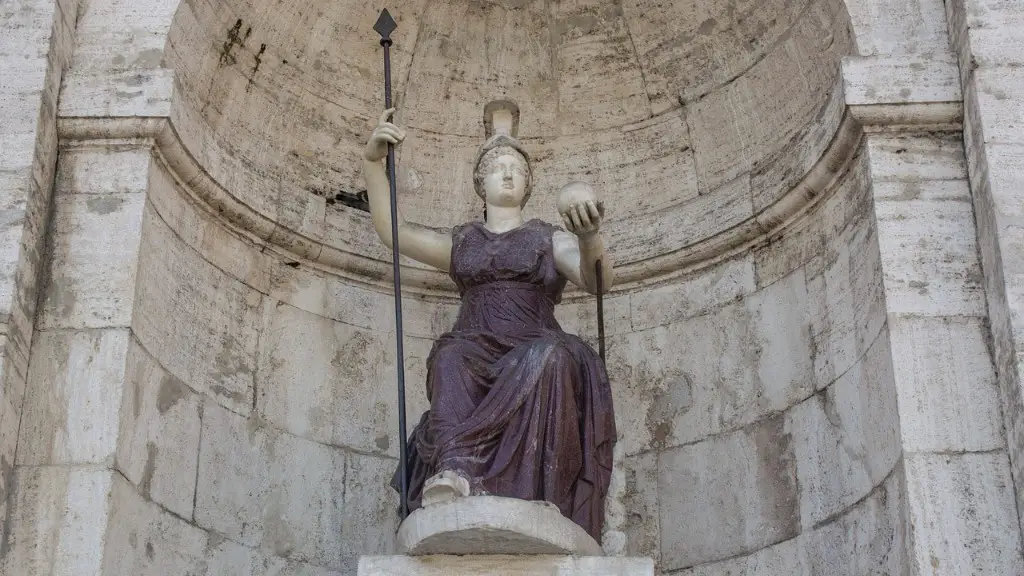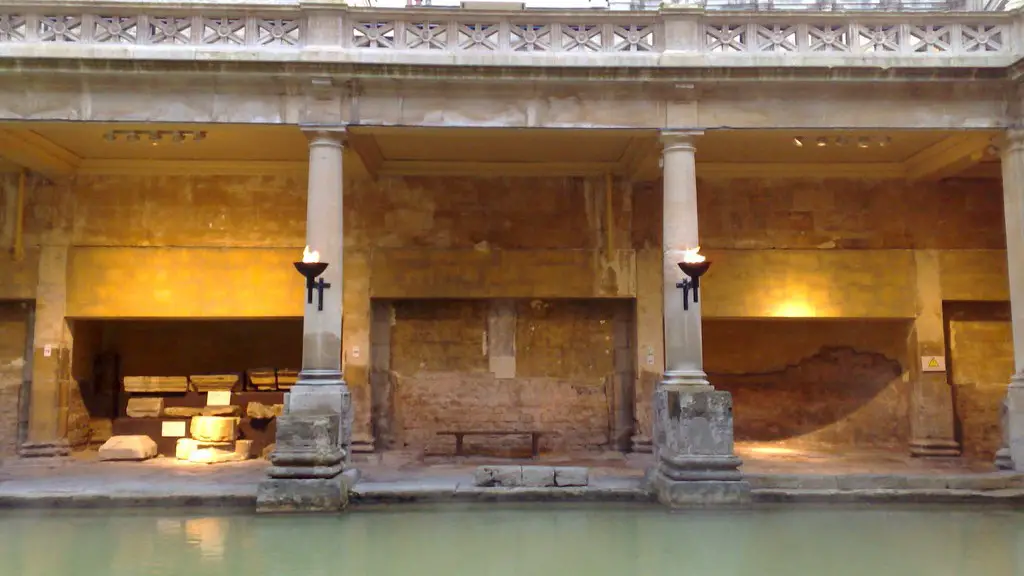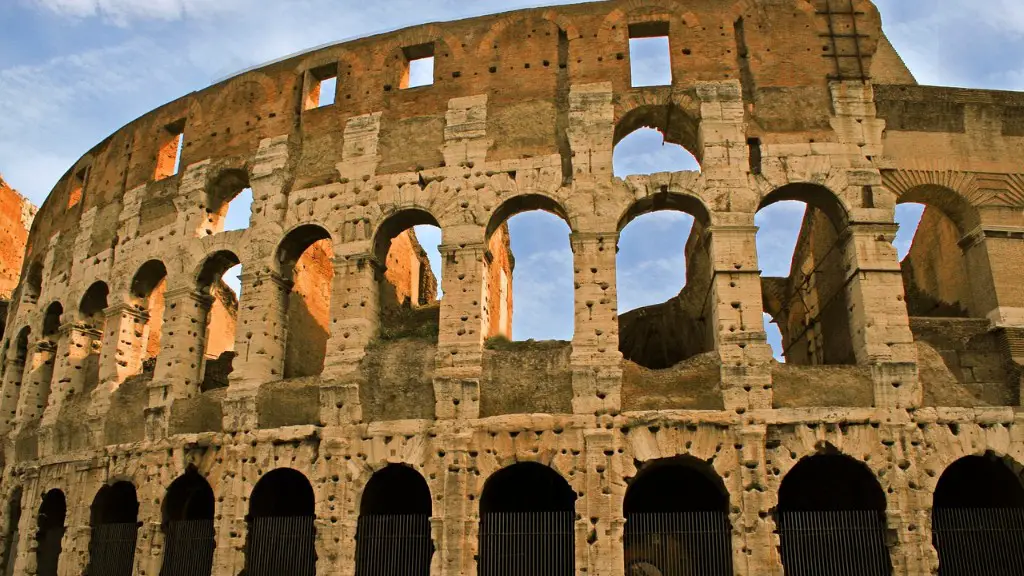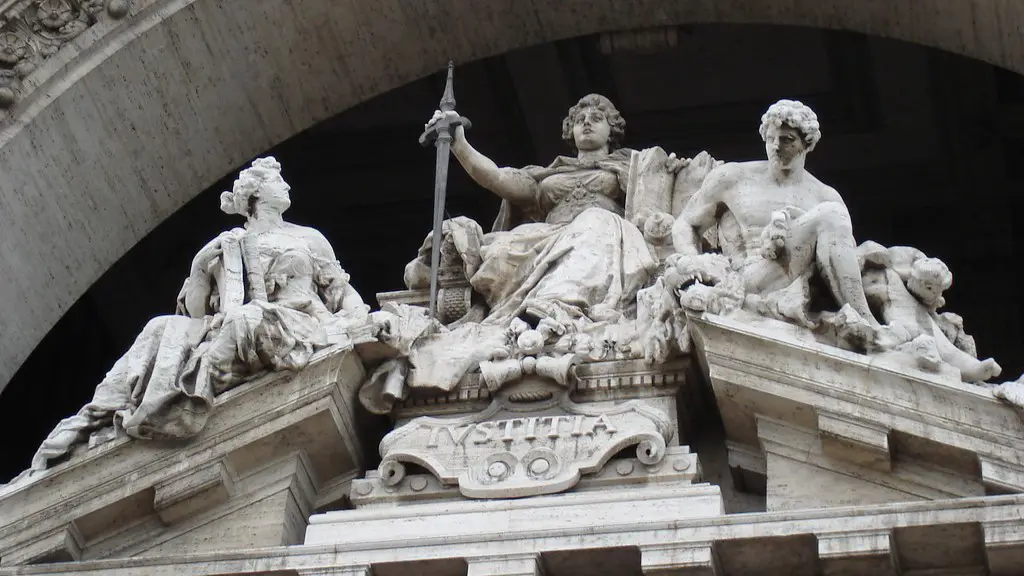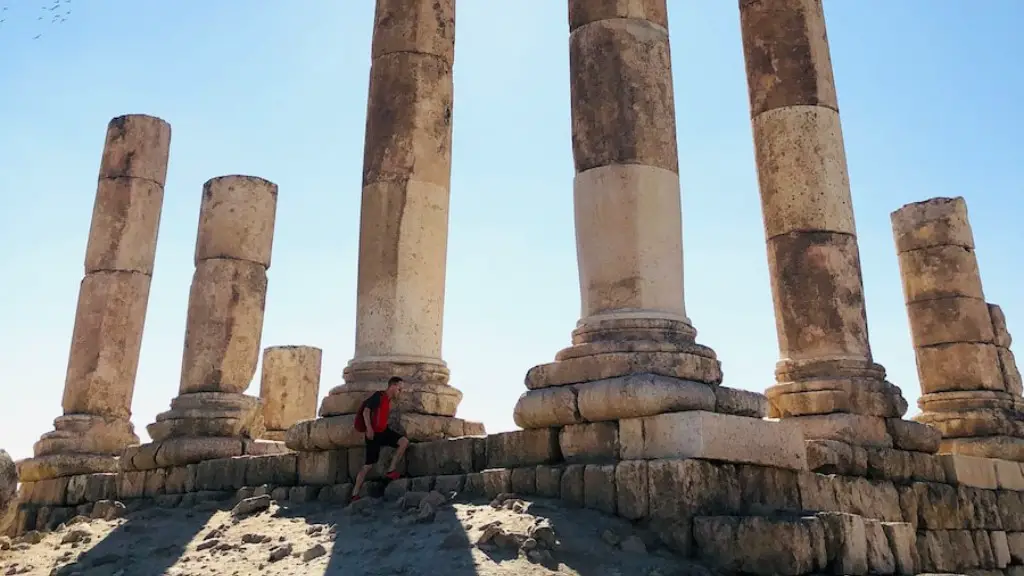The Colosseum of Rome was one of the most iconic and iconic buildings of the Roman Empire. It was erected in 80 CE, under the rule of Emperor Vespasian, as a grandiose reminder of the power of the Roman Empire. Built from stone and concrete, the Colosseum quickly became the symbol of Imperial Rome, and it remained so for centuries.
The main purpose of the Colosseum was to host the great gladiatorial contests. The bloody spectacles attracted hundreds of thousands from all over the Empire, turned into an audience thirsty for blood, and were eagerly awaiting the performances of the gladiators, slaves, and condemned criminals. The shows embodied, in a way, the power of the Roman Empire, over its citizens and enemies alike.
The amphitheatre, as it is properly called, is a feat of engineering and construction. Its shape is what helped it become such a symbol and part of the Roman way of life. The elliptical shape made it possible to view and hear the battles better. It could accommodate up to 50,000 people and the tiers of the amphitheatre were divided according to the social standing of the viewers. This was enforced the class distinctions in Roman society.
After the fall of the Empire, the Colosseum was left in ruins, forgotten by most. It served as a quarry for building materials and as a source of marble for sculptures. The ruin was not considered for renovation until the 18th century, when it was decided that such an iconic building should be preserved. During the 19th century it was studied and restored. But it was not until the 20th century that the Colosseum was given the recognition it deserved and it was declared a UNESCO World Heritage Site in 1980.
The colosseum still stands today as one of the great symbols of the Roman Empire. It is visited by millions of tourists from all over the world each year, eager to gain a glimpse of its awe-inspiring structure. Moreover, it has been the setting for numerous cinematic versions of gladiatorial battles and continues to fascinate scholars and the public alike.
Architecture of the Colosseum
The Colosseum has an elliptical shape, which is its iconic feature. Its construction was a feat of engineering, even for the Romans, as it encompassed a complex system of pillars, arches and vaults, which have supported the structure for centuries. The building consists of four levels, each with its own unique decorations, leading all the way up to the top of the structure, where the Emperor and the most important people in the Empire used to sit.
The monument has also some vast underground chambers and passageways, through which animals, gladiators and slaves used to enter the arena. This part of the Colosseum was used to control the entrance of people, animals and objects, as well as to keep the fierce battles beneath the stadium.
The Colosseum was known for its lavish decorations and sculptures, which served to heighten the sense of awe of the audience. Everywhere there was something to admire, from the marble facade on each side, to the sculptures of gods, goddesses and scenes from the mythology of the Roman Empire. Each part of the stadium had its own decoration and purpose, and the whole of it showed the grandeur of the Roman Empire.
Purpose of the Colosseum
The Colosseum was built primarily to be the site of major gladiator battles and shows. The battles were battles to the death, and many people were killed in the arena. The audience was very passionate and clamoured for more intense fights. Moreover, these spectacles enabled the Emperor to show off their power to their citizens and vassals.
The shows in the Colosseum also served the political purpose of presenting to the people of the Roman Empire a vivid demonstration of their imperial power. The shows could last for hours and were a representation of Rome’s military strength, with the battles of the heroes representing Rome’s battles and victories.
Apart from the gladiator battles, the colosseum was also used to host wild animal shows, with animals such as elephants, lions and tigers being brought in from the far corners of the Empire. These shows served to demonstrate the power of the Emperor to control even the most dangerous animals.
In addition to these spectacles, the Colosseum also hosted public executions and other forms of punishment, further reinforcing the power of the Roman Empire. As time went by, the games became wilder and eventually, they started to feature Christian martyrs, who were punished for their faith.
The End of the Colosseum
The Colosseum had a long life of thousands of years. However, it eventually began to decline in popularity and importance. The decline was accelerated by the fall of the Roman Empire and the spread of Christianity.
The last gladiatorial show took place in 454 CE, and from that date on, the Colosseum was abandoned and left to itself. The structure began to deteriorate and become overgrown with vegetation, but it would eventually be restored.
In the present day, the Colosseum still stands, a reminder of the might of the Roman Empire. Despite its crumbling facade, it is still believed to be the largest amphitheatre in the world.
Rebirth of the Colosseum
The Colosseum has undergone a rebirth in modern times. During the 19th century, it was studied and restored, and it was declared a World Heritage Site by UNESCO in 1980.
The Colosseum has become a popular tourist attraction, and millions of people visit it each year, eager to relive the history of the Roman Empire. It has become such an important symbol, that it appears on coins, stamps, and even as a symbol of Rome’s football team.
The Colosseum is also used as an entertainment venue and has hosted concerts by world-famous artists such as Elton John, U2 and Madonna. The live performance of these artists only adds to the grandeur and majesty of the Colosseum.
In addition to its popular entertainment functions, the Colosseum is also used for research and educational purposes. It is the site for archaeological excavations and the reconstruction of history. It is also the site of regular lectures and seminars, where the history and significance of the Colosseum are discussed.
Modern Perception of the Colosseum
The Colosseum retains its iconic and iconic image, even in the present day. It is one of the most recognised symbols of the Roman Empire, and it has become part of our collective memory. Nowadays, it symbolises strength and resilience, and stands as a reminder that even the most powerful empires can eventually fade away.
The modern perception of the Colosseum has also changed. Despite its bloody history, today it is seen more as a symbol of peace, than of bloodshed and slavery. It is a place to relax and admire the beauty of history, rather than a place where life and death was decided.
The Colosseum has become a symbol of humanity, that even in dark times, there is beauty to be seen and appreciated. It stands as a reminder that when life becomes hard, we still have a chance to find beauty in it.
Legacy of the Colosseum
The legacy of the Colosseum is immense. It is a reminder of the history of the Roman Empire, and of the immense power that it wielded. It is also a reminder of the complexities of society, as the ranks of the spectators were determined by class. Finally, it is a reminder that even the most powerful empires will eventually pass away.
The Colosseum has been a source of inspiration to many authors and filmmakers, who have used its image as the backdrop of their works. It has been featured in countless movies, books and games, depicting the relentless battles of the gladiators. As such, it remains one of the most iconic symbols of Rome and its culture.
The Colosseum stands today as a testament of human ingenuity and power, even in dark times. It is a testimony to the power of the Roman Empire and its influence on the world. It has been an inspiration to many cultures and civilizations, and it has outlived its makers, a reminder of its greatness and resilience.
